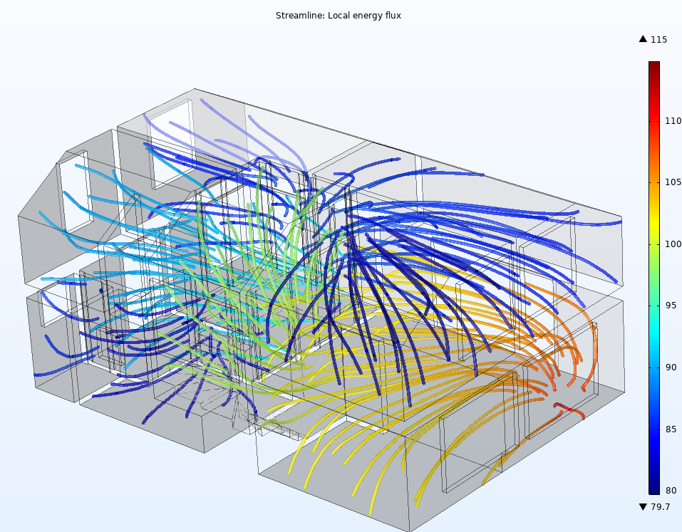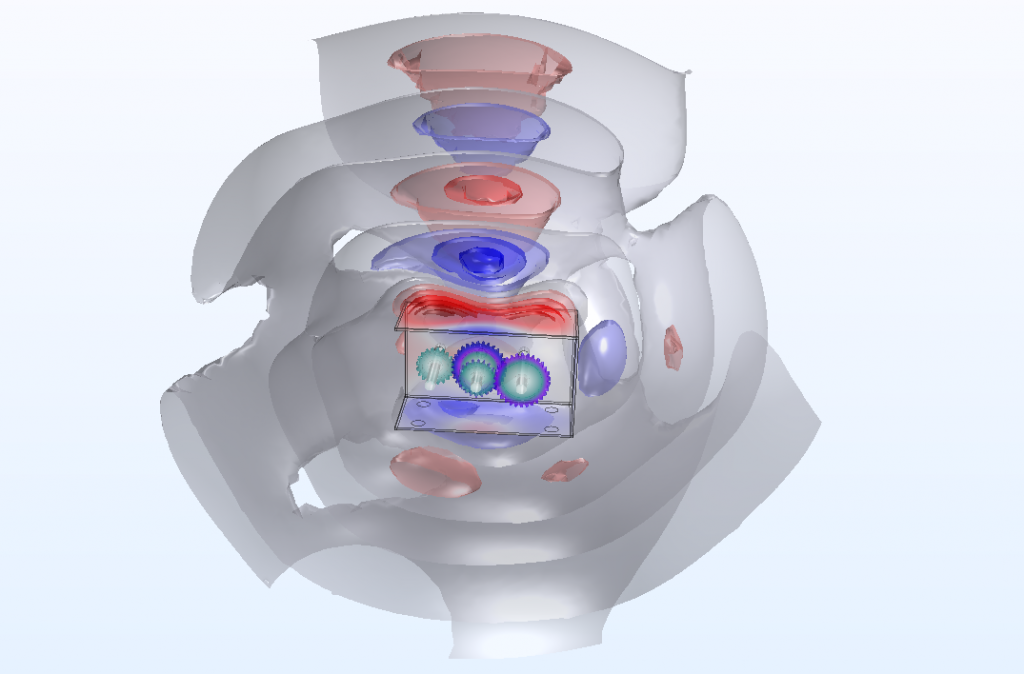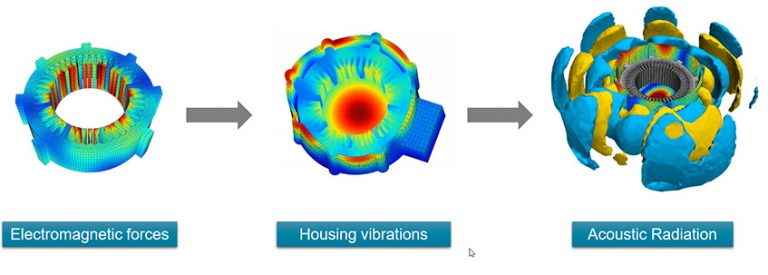Architectural Acoustic Consulting Services: Environmental Noise, Auralization, Sound and Vibration Isolation per ASTM and ANSI Standards
Enteknograte Corp. has become an industry leader through our wide range of experience in advanced simulation-based design procedures, and our cutting-edge architectural acoustic consulting services. Enteknograte conducts field sound level certifications for architects, engineers, surveyors, developers, flooring contractors, and various governmental agencies, as well compliance testing for new equipment, community noise, and industrial noise per ASTM and ANSI standards.
- Sound measurements to determine the existing reverberation time (RT) of rooms and evaluate sound absorption of the rooms
- Acoustical testing simulation including Sound Transmission Class (STC) and impact (FIIC) testing of residential and commercial properties and Noise Criterion testing of background noise in rooms
- Reviewing architecture plans and details to determine potential acoustic conditions of the space and evaluate the building envelope for noise isolation from exterior noise sources
- Acoustical treatment options to optimize reverberation time
- Mechanical equipment noise control guidelines
- Design noise criteria for noise sensitive spaces
- Sound isolations between noise sensitive spaces
- Vibration isolations for mechanical equipment
Acoustics is the key to success for many buildings and building spaces, and it shall be carefully considered for a space to function well. When acoustic considerations are applied to a building, not only it will increase a space’s functionality, but also add tremendous value to the building. We own state-of-the-art simulation-based design softwares and can perform an array of acoustical tests simulation, including Field IIC and STC , Noise Criteria testing, Reverberation Time (RT60) testing, as well compliance testing for new equipment, community noise, and industrial noise per ASTM and ANSI standards.
Environmental noise
Environmental noise is defined as the unwanted or harmful outdoor sound created by human activity, such as noise was emitted through transport, road traffic rail traffic, air traffic and industrial activity. World Health Organization (WHO) identifies that noise pollution is an increasing problem but has not really been taken seriously enough by the people who have tended to prioritiseother seemingly more pressing environmental issues. Environmental noise poses a risk to people’s health and quality of life because it can lead to physical and physiological effects.
Auralization
When it comes to discussing solutions for our clients, we show our work. We use all available tools during the design phase , comparative auralization, digital analysis and go one step further by correlating those tools with an evaluation by ear. The simulation-based design with advanced acoustics environment simulation softwares, enable us to present real-world sound and noise inside and outside of buildings. We speak all the languages of actors, artists, engineers, and designers.


Sound Isolation
Structural Acoustics analyzes noise transmission from building exterior envelope to interior and vice versa, as well as noise transmission from one room to another within the building environment. Inadequate acoustical isolation may lead to elevated sound levels within the space which reduces privacy, comfort level and concentration ability; severely limits speech intelligibility and has implications for noise health effects. Primary noise paths often include roofs, ceilings, eaves, walls, windows, doors, room partitions, as well as flanking, ducting and other penetrations. Sufficient noise containment control ensures space functionality and is often required by local municipal codes.
Before the design drawings, we will develop 3D simulation of the interior acoustics. The simulation model will be used to predict, through calculation, the expected levels of reverberation. The predicted acoustic characteristics will be evaluated with respect to the reverberation criteria to address speech intelligibility or musical quality if applicable. Where necessary, we will provide recommendations to optimize the interior acoustics and sound system performance with regard to the location and specification of interior surface treatments.
Enteknograte offers a Virtual Engineering approach with CFD and FEA tools such as MSC Cradle, Ansys Fluent, StarCCM+ for flows simulation and FEA based Codes such as ABAQUS, Ansys, Comsol and LS-Dyna, encompassing the accurate prediction of in-service loads, the performance evaluation, and the integrity assessment including the influence of manufacturing the components. Dependent of problem, we use ESI VA-one, MSC Actran and ODEON Room Acoustics Software as acoustics solver
Noise and vibration analysis is becoming increasingly important in virtually every industry. The need to reduce noise and vibration can arise because of government legislation, new lightweight constructions, use of lower cost materials, fatigue failure or increased competitive pressure. With deep knowledge in FEA, CFD and Acoustic simulation, advanced Acoustic solvers and numerical methods used by Enteknograte engineers to solve acoustics, vibro-acoustics, and aero-acoustics problems in automotive manufacturers and suppliers, aerospace companies, shipbuilding industries and consumer product manufacturers.
WE WORK WITH YOU
We pride ourselves on empowering each client to overcome the challenges of their most demanding projects.
Enteknograte offers a Virtual Engineering approach with FEA tools such as MSC Softwrae(Simufact, Digimat, Nastran, MSC APEX, Actran Acoustic solver), ABAQUS, Ansys, and LS-Dyna, encompassing the accurate prediction of in-service loads, the performance evaluation, and the integrity assessment including the influence of manufacturing the components.

Simulation-Based Design for better understand and improve the acoustics performance of your designs:
- Sound radiation by vibrating structures: powertrain, engine components (intake manifold and air filter, valve cover, etc.), compressors, electrical motors, loudspeakers.
- Intake and exhaust noise, including complex mufflers and silencers.
- Air conditioning units and distribution systems.
- Sound absorption inside passenger compartment of cars and trains.
- Sound propagation in complex media with mean flow or temperature gradient.
- Audio devices such as telephones, hearing aids or musical instruments.
AeroAcoustics
AeroAcoustics simulation try to use advanced capabilities with couple using of CFD simulation and advanced Acoustic solvers to predict accurately and efficiently the noise generated by turbulent flows. Results from an unsteady flow simulation performed with CFD codes such as Ansys Fluent, StarCCM+, Numeca, AVL FIRE M, OpenFOAM and others are used by AeroAcoustics solver to compute aerodynamic noise sources.
With using AeroAcoustics simulation, our engineers can study the noise generated by any turbulent flow and the interactions between the aeroacoustic noise sources and a vibrating structure, absorbant materials or acoustic traps such as resonators.
Applications:
- Air conditioning modules (HVAC).
- Side mirror noise.
- Airframe noise (landing gear, trailing edge).
- Air distribution systems.
- Fan Noise

VibroAcoustics
In order to study the interaction of structural vibration with the fluid, it is necessary to model the acoustic behavior of the involved structural components including the conventional material for acoustic or visco-elastic media, porous or incompressible media, composite materials or active components like piezo-electric ceramics.
Applications:
- Automotive: Noise related problems from powertrains, intakes, exhausts, passenger compartment, trim, seats, hoses, tires, windows and windshields, audio, HVAC.
- Aerospace: Sound transmission through cockpit and fuselage, noise propagation in air distribution system, random dynamic response at take-off.
- Consumer goods: Telephones, headsets, loudspeakers, hearing aid devices, disk drives, washing machines, refrigerators, cameras

Boundary Element Acoustics
Often used for exterior acoustics problems, the boundary element method (BEM) is ideal for problems involving very complex geometry that may be a challenge to model for the FEM method. The BEM method helps simplify exterior acoustics simulation since only the outer surface mesh of the geometry is needed. This simplifies both the modeling process and reduces the degrees of freedom in the simulation model which will result in easier analysis.
Finite Element Acoustics
The finite element method (FEM) for acoustics analysis is ideal for simulating interior acoustics problems. In addition to FEM being the more efficient method in terms of solution speed, FEM acoustics lets you perform coupled vibro-acoustics analyses that take structural modes and soundproofing materials into consideration. FEM acoustics can be used to solve exterior acoustics problems as well, which is often used for noise analysis of air induction systems in powertrain.
Aerospace Engineering: AeroAcoustics and VibroAcoustics Simulation
AeroAcoustics and VibroAcoustics in Automotive Industry
NVH & Acoustics for Hybrid & Electric Vehicles
Structural Dynamics Integrity & Vibro-Acoustics Simulation for Marine & Shipbuilding Industry
Audio Device Design: Acoustic simulation for Sound Quality Analysis in Consumer Electronic Devices
NVH ( Noise, Vibration, and Harshness ) simulation services
Finite Element Analysis of Durability and Fatigue Life
Vibration Fatigue Finite Element Simulation: Time & Frequency Domain
Hydrodynamics & HydroAcoustics simulation for AIV (Acoustic Induced Vibration)
Cavitation in Propulsion Systems
Multibody Dynamics & NVH (Noise, vibration, and harshness)
Noise, Vibration & Harshness – NVH for Electric Motors


Enteknograte offers a Virtual Engineering approach with CFD and FEA tools such as MSC Cradle, Ansys Fluent, StarCCM+ for flows simulation and FEA based Codes such as ABAQUS, Ansys, Nastran and LS-Dyna, encompassing the accurate prediction of in-service loads, the performance evaluation, and the integrity assessment including the influence of manufacturing the components. Dependent of problem, we use ESI VA-one and MSC Actran as acoustics solver
Hydrodynamics CFD simulation, Coupled with FEA for FSI Analysis of Marine and offshore structures
Integrated Artificial Intelligence (AI) & Machine Learning - Deep Learning with CFD & FEA Simulation
Seat Design: Finite Element and CFD Simulation for Static & Dynamic Comfort, Whiplash, Acoustic & Thermal Comfort, Crash Test
1D/3D Coupled Simulation and Co-Simulation: Detailed Chemistry & Multiphase Flow Modeling with 1D Modeling
Aerodynamics Simulation: Coupling CFD with MBD, FEA and 1D-System Simulation
eVTOL (Electric Vertical Take-Off and Landing) & UAM (Urban Air Mobility)
Full Vehicle MultiBody Dynamics Simulation: Car Ride, Driveline, Engine and Tire MBD
Robots Dynamics & Performance Assessment: Coupled MBD & FEA Simulation-Based Design
Heat Transfer and Thermal Analysis: Fluid-Structure Interaction with Coupled CFD and Finite Element Based Simulation
Aerodynamic Noise Simulation
Acoustics and Vibration: FEA and CFD for AeroAcoustics, VibroAcoustics and NVH Analysis
Electromagnetic Multiphysics




